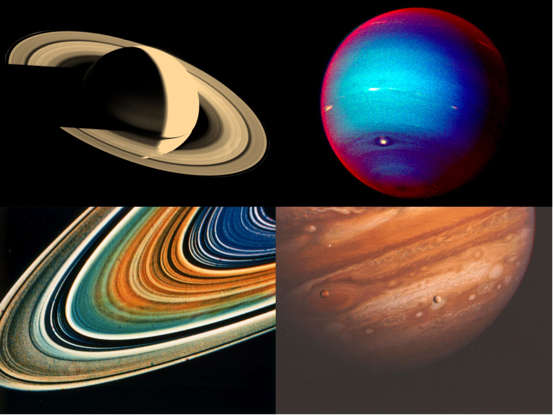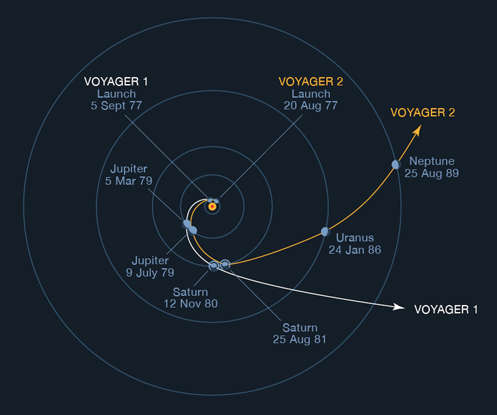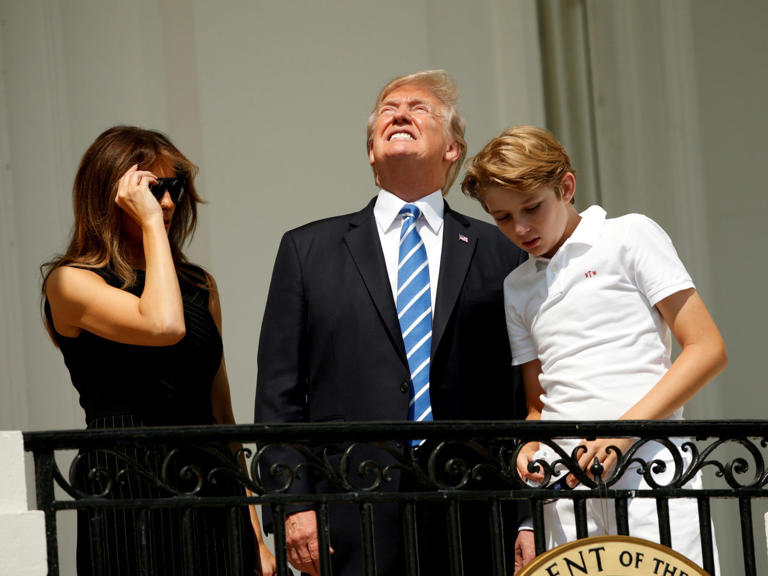Voyager 1 and Voyager 2 reached Jupiter in 1979.
As they flew by the planet, they took about 50,000 pictures of Jupiter. These blew away scientists, as the quality of the pictures was much better than those taken from Earth, according to NASA.
These snaps taught scientists important facts about the planet’s atmosphere, magnetic forces, and geology that would have been difficult to decipher otherwise.
A solar eclipse is coming to the western US on October 14. It will begin just south of Portland, Oregon, in the morning, then cast its shadow across the southwest to reach San Antonio, Texas, around noon.
It may be your last opportunity to see the sun swallowed in shadow for two decades.

“It’s going to be absolutely breathtaking for science,” Madhulika Guhathakurta, an astrophysicist specializing in the sun at NASA, said in a briefing about the upcoming celestial event.
No doubt the eclipse will be breathtaking for viewers on the ground, too. Here’s everything you need to know before the sun goes dark.
What an annular solar eclipse is, and what causes it
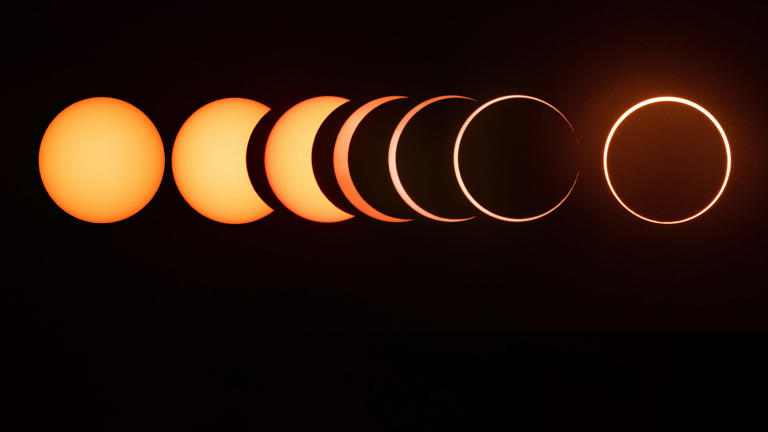
A solar eclipse occurs when the moon passes between the sun and Earth, blocking the sun from our view for a few fleeting minutes. When everything lines up just right, with the moon at the right distance to cover the sun’s entire disc, we get a total solar eclipse.
The ring of fire comes from the sun’s chromosphere, a layer of its atmosphere where hydrogen atoms emit a reddish light.
“That’s what makes it so beautiful,” Guhathakurta said.
Solar eclipses happen every year, but seeing them is rare

People watch a partial solar eclipse in Diyarbakir, Turkey. Sertac Kayar/Reuters© Provided by Business Insider
Some kind of solar eclipse happens about two to five times per year, according to the Natural History Museum. A total eclipse occurs roughly every 18 months.
They’re often over the ocean or unpopulated places, though. It’s rare to have an eclipse near you.
Any one spot on Earth gets a total solar eclipse every 400 years, according to the museum.
The US gets its next eclipse in April 2024. That eclipse will be total, and it will cut across the eastern US from Texas to Maine.
After that, the contiguous US won’t see another total solar eclipse until 2044, or an annular eclipse until 2046.
Where to see the solar eclipse and stand in its ‘umbra’
The umbra, aka the moon’s shadow, is the place to be. That’s where you can see the annular eclipse and the ring of fire.
The umbra will carve a narrow path across the western US, from the Oregon coast to Corpus Christi, Texas.
About 68 million people live within a two-hour drive of the eclipse’s path, according to Alex Lockwood of NASA’s Science Mission Directorate. She added that the entire contiguous US will be able to see a partial solar eclipse, though the moon may just barely overlap the sun in many places.
NASA created a detailed map, below, to show where exactly the umbra of the October eclipse will fall — that’s the diagonal line on the western side of the country — as well as the 2024 total eclipse on the eastern side of the country.
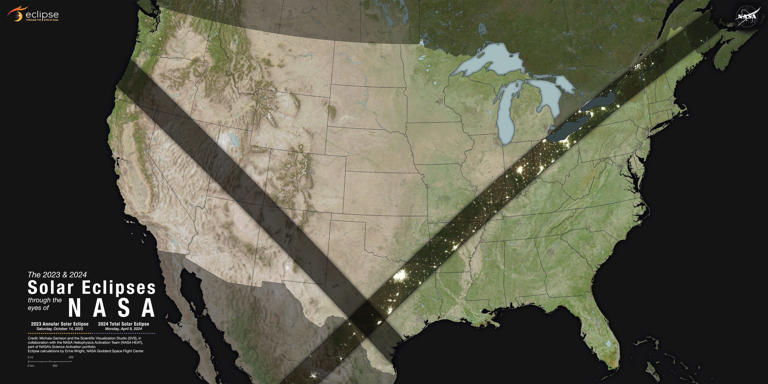
The paths of the October 2023 annular solar eclipse (left) and the 2024 total solar eclipse (right). NASA’s Scientific Visualization Studio© NASA’s Scientific Visualization Studio
You can download a high-resolution version of the map with the exact timing of the eclipse in each city on NASA’s website.
How to view a solar eclipse without burning your eyes
If you look at a solar eclipse with no protection, you could damage your eyes. That’s because the sun’s ultraviolet radiation can burn your retina, causing permanent damage within about 100 seconds, according to NASA. Since there are no pain receptors in your retina, you may not notice the damage until it’s too late.
So don’t look directly at the sun, even during the peak of an annular eclipse.
Instead, get a pair of eclipse glasses or a handheld solar viewer online or from your local planetarium, which could be hosting an eclipse-watching event if it’s in the path of the umbra.
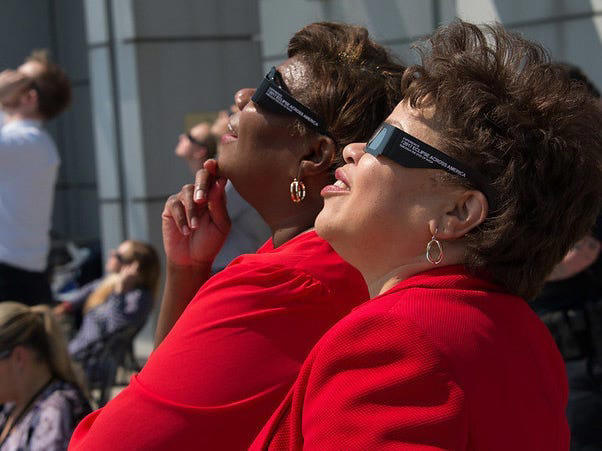
NASA employees use protective glasses to view a partial solar eclipse. NASA/Connie Moore© NASA/Connie Moore
Make sure the solar filter in your glasses or handheld viewer has an ISO 12312-2:2015 certification. The manufacturer’s name and address should be visible on the product, too.
The National Park Service advises against using any solar filter that’s torn, scratched, wrinkled, coming loose from its frame, or made before 2015.
Do not look at the sun through a camera, telescope, or binoculars, even if you’re wearing eclipse glasses or using a handheld solar filter. According to NPS, “the concentrated solar rays will damage the filter and enter your eye(s), causing serious injury.”
If you don’t have a solar filter, you can use a technique called pin-hole projection to watch the eclipse unfold.
You can do this with your hands, according to NPS: “Cross the outstretched, slightly open fingers of one hand over the outstretched, slightly open fingers of the other hand. With your back to the sun, look at your hands’ shadow on the ground. The little spaces between your fingers will project a grid of small images on the ground, showing the sun as a crescent during the partial phases of the eclipse.”
Or you can follow NASA’s guide to make a projector out of card stock and aluminum foil. You can even use a kitchen colander to project a pinhole and watch the moon creep across the sun.
https://www.msn.com/en-us/weather/topstories/a-rare-solar-eclipse-is-happening-in-the-us-this-weekend-and-68-million-americans-have-the-chance-to-see-it-here-s-when-where-and-how-to-see-this-spectacular-ring-of-fire-safely/ar-AA1hw7EK?ocid=msedgntp&cvid=d3e312518b8747538597254c3820198c&ei=17#image=AAYJxQs|4

